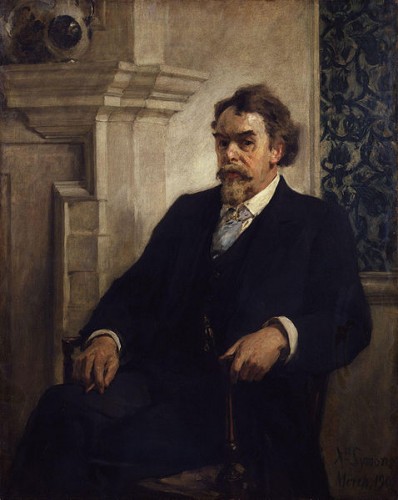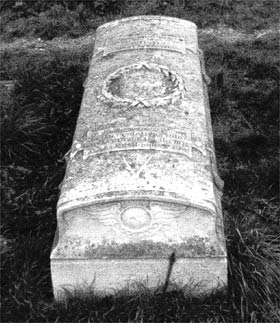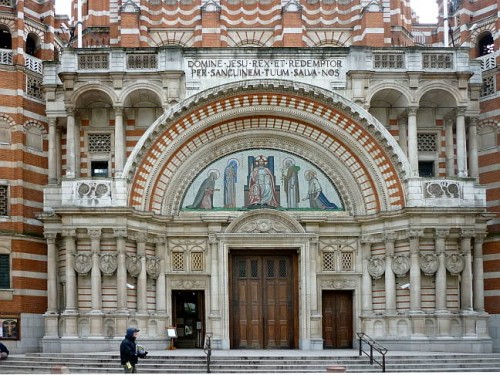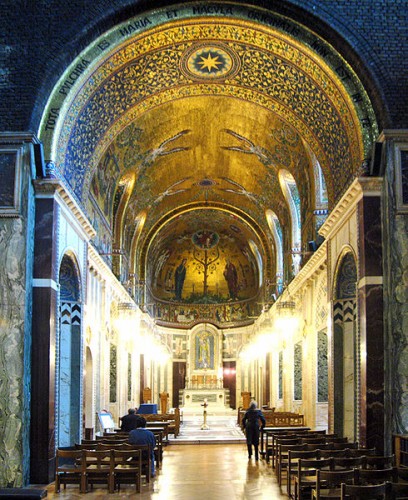John Francis Bentley
Posted by Richard Rawlinson
To Clergy House for a council meeting of the Friends of Westminster Cathedral. It’s the council’s job to organise fundraising events from concerts to barbecues for the upkeep of said cathedral, and to plan the best ways to spend the money raised. There are separate charitable initiatives that support the London homeless or international aid agencies, so the Friends’ work focuses on housekeeping matters: a mosaics appeal for the Chapel of St George and the English Martyrs, for example; the repair of a leaking roof; new lavatories for visitors, or the purchase of new missals for the year ahead.
While with clerical and lay council members in the wood-panelled library, a dinner is suggested to honour John Francis Bentley (1839-1902), the acclaimed architect responsible for the neo-Byzantine magnificence of the Cathedral.
During the meeting, I learn Bentley is buried, not in his architectural legacy, but in a cemetery in Mortlake, West London, and that his simple tombstone is neglected and in need of restoration, there apparently being noone left to take on its upkeep.
Bentley’s tombstone
There are so many causes out there but it seemed sad that Bentley, though remembered in art history books, is being forgotten in his resting place. Something will be done about it.
Footnote: Other more famous worthies have no such anonymity. See here the much-visited graves of stars including Oscar Wilde, Bruce Lee, Princess Diana, Frank Sinatra and Jim Morrison.
Westminster Cathedral
Westminster Cathedral
Westminster Cathedral, the Lady Chapel







I have probably visited Westminster Cathedral two or three times in my life (its not exactly on the doorstep!) but I have to say I did not remember it being so beautiful! And some very distinctive Norman style architecture at the entrance too. (for reasons that would take too long to go into I have never quite forgiven the Normans for destroying the earlier Cathedral at Westminster built by Edward the Confessor!)
Thanks for the pictures,Richard. This is definitely on my ‘to do’ list next time I find myself in London!
Jenny, during your next trip to London, I hope you get to visit both Westminster Abbey and Westminster Cathedral, they’re 10 minutes walk apart. The former, with origins as far back as the 7th century, still has 11th century vaults (now the location of its museum). Bentley’s Catholic Cathedral, just 100 years old, is inspired by early Christian neo-Byzantine architecture such as St Mark’s Basilica in Venice and Hagia Sofia in Constantinople (Istanbul!). While the less historic Cathedral is free entry, the Abbey charges, except for service attendance, but has a spectacular array of tombs from Shakespeare to Edward the… Read more »
The Byzantine influence is obvious…..very much in the style of pre-Norman. British church architecture. If you look at the Westminster Cathedral in the spectacularly inaccurately named Bayeux Tapestry (replaced, ad you say by the Norman Westminster Abbey….I am aware of both.:-) you will be interested to see how similar it is to the Cathedral.
Ah, I see what you mean, Jenny. Confusion arising from you referring to the Abbey as the Cathedral!
I have become familiar with the Cathedral in recent years, because a friend of mine (and Richard’s) is Director of the Friends. I didn’t initially find its architecture particularly sympathetic, but it has grown on me. I was lucky enough to go on an Arts & Crafts tour of the building a few years ago. It’s not the style one immediately thinks of, but once you start looking at the details, it’s everywhere.
So true, Judith. The Stations of the Cross by sculptor Eric Gill are just one case in point.
They are remarkable – one of London’s hidden gems.
I find the tomb of St John Southworth as fascinating as I used to find the Egyptian mummy in Bolton Museum when I was little.
St John Southworth was a Lancastrian, too! From Blackburn before priesthood and martydom at Tyburn (now Marble Arch).
He has a shrine at Salmesbury, a very attractive, and Catholic, part of Lancashire. But I digress.
Digress away, Judith! Bentley was from Doncaster.
Well since I am digressing, how about a post on the subject of unburied bodies? To include exposed relics, such as St John Southworth (at least he’s reasonably complete, even if quartered), Egyptian mummies, Pete Marsh in the BM, Lenin, Jeremy Bentham etc. There’s such a strong imperative to give bodies a decent funeral – Priam supplicating Achilles for the body of Hector, Antgone scattering ritual dust on the corpse of her brother, forbidden burial by Creon – and yet there are corpses exposed to public gaze all over the place. Does antiquity make a difference? Does religion? Richard and… Read more »
Judith: very interesting point and I am disturbed by the public display of corpses of people from ‘recent’ history. However, ever since I lived near the British Museum as a student (and could pop in whenever I wanted) I have been fascinated by Egyptian mummies. Never wanted them to be buried. No logic.
(More digression – sorry RR ) Is that ‘real’ corpses, Belinda? I am still disturbed by photographs in the media of ‘real’ newly dead people. I can still remember the publication in a Sunday Paper of a photograph of the booted feet of a dead soldier, which caused some outrage at the time. It seems to breach some privacy ethic in me, and yet I’m also aware that it fascinates me in equal measure! Egyptian mummies too- couldn’t stop looking at them and yet feeling that somehow I was betraying some ancient family their ancestor’s peaceful rest. Fickle indeed.
Yes real and filmed/photographed. I watched the film Lawless last night and amongst lots of violent scenes, the most distrubing one of all was of a wake. A proper wake with the dead person in full view. But not lying down in his coffin, standing up. With a cigarette in his mouth and people pouring drink into his mouth so that he was ‘joining in’ with the party.
A welcome digression. I agree with Belinda that displays of modern corpses are somehow more disturbing than those of Egyptian mummies or Peat Marsh. Jeremy Bentham counts as ‘modern’ as he’s from an era and culture in which such display is deemed undignified. Museum exhibits from ancient history somehow don’t seem as intrusive, perhaps because they had proper burials before they were unearthed. Display wasn’t in the intended scheme of things. With regard to corpses in the media, I think TV and print journalists are quite cautious about what they show in order to avoid upsetting audiences. Gratuitous voyeurism would… Read more »
OK, here’s an interesting one. One I have thought a great deal about myself. Richard has writen about the ‘Christian herriatage’ of the UK (a fact that I in no way dispute with him, although I think we may differ on its significance). Regardless of our own religious or spiritual beliefs,does the way in which we respond to the display of the dead on a ‘gut’ level depend on whether the dead person in question was Christian (or at least burried during a Christian period of history) or ‘Pre-Christian’. As a society (if not for all individuals) I strongly suspect… Read more »
Very interesting point, Jenny. Is a display of a corpse from BC1800 less unsettling than one from AD1800? My illogical gut feeling is that it is less unsettling but I’m not sure this is because the latter is perhaps Christian. Egyptian mummies and Peat Marsh were discovered and then displayed for educational purposes. An eccentric of more recent times who requests that, on death, he’s mummified for the purpose of being a museum exhibit raises eyebrows, rightly or wrongly. It’s somehow different when embalmed bodies are displayed to the public in mausoleums rather than museums, whether Lenin’s tomb or the… Read more »
We are far less logical creatures than we like to imagine, I think. And emotion is closely connected with decision making and other things we like to pretend are purely rational.
Thanks for this…very interesting.
My experience of watching archeological programmes is that ‘Christian’ remains are very often reinterred with some form of ritual or ceremony afterwards wheras pre-Christian remains very rarely are.
My own ‘gut feeling’, for what its worth, is that the Egyptian mummies are less disturbing than Pete Marsh because by preserving their bodies and names in a place of public interest we are fulfilling precisely the purpose which they themselves had and failed to achieve.
How’s that for illogical!
Jenny, re pre-Christian ritual, researchers have found burial grounds of Neanderthal man dating to 60,000 BC with animal antlers on the body and flower fragments next to the corpse indicating some type of ritual and gifts of remembrance.
Some archeological finds may mislead by being of people who died outside the community: a tribal battle or hunting accident, meaning they were buried without ceremony. Even if Neanderthal man had no great psychological knowledge or custom to draw from, he may have instinctively buried the dead with ceremony.